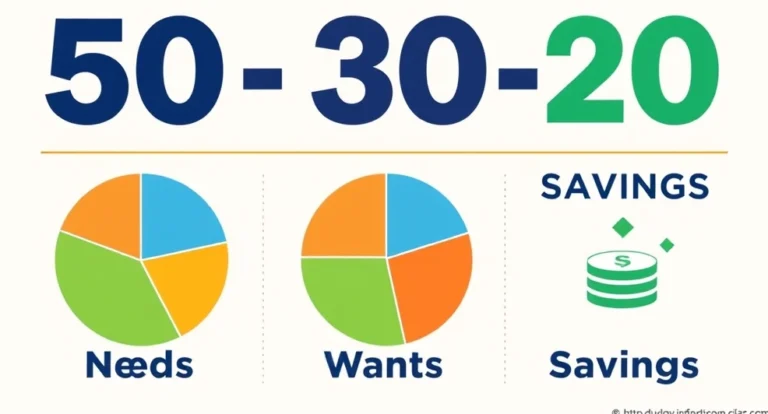10,000 Savings Plan: How to Save $10,000 in a Year with These Simple Tips
Saving $10,000 in a year might seem like a big challenge at first. But the truth is, with the right approach and consistent effort, it’s absolutely attainable. All it takes is the willingness to commit and to make changes to your daily habits. Whether you’re planning for a big purchase, building an emergency fund, or getting closer to financial independence, this guide will break the goal down into achievable steps and show you how to make it work.
Breaking Down the Goal
To save $10,000 in a year, it helps to divide the goal into smaller, more manageable chunks. Here’s the math:
- Monthly Target: $10,000 ÷ 12 months = approximately $833 per month
- Weekly Target: $10,000 ÷ 52 weeks = around $192 per week
By breaking it down, you’ll see that the numbers are more manageable, especially as you implement the tips below.
Step 1: Build a Budget That Works
The foundation of any savings plan is understanding where your money is currently going. This starts with creating a solid budget.
- Track Your Expenses: Use a spreadsheet, a budgeting app, or even a notebook to log every dollar you spend over a week or two. Categorize them into essentials (rent, groceries, bills) and non-essentials (entertainment, dining out).
- Cut Unnecessary Costs: Once you’ve tracked your spending, identify areas to cut back. Is your morning coffee habit costing you $100 a month? Could you reduce your subscription services or takeout orders? Every small change makes a big difference.
- Set Spending Limits: Give yourself a clear spending limit for non-essentials. For example, allocate $100 per month for entertainment instead of $300, and funnel the savings into your $10,000 goal.
Step 2: Trim Your Expenses
One of the quickest ways to start saving is by reducing costs on non-essential items. Consider these strategies:
- Eat at Home: Cooking meals instead of dining out can save you hundreds each month. Prep meals in bulk and aim to eat at home 90% of the time.
- Cancel Unused Memberships: Are you paying for a gym membership you don’t use, or multiple streaming services? Cancel what you don’t need.
- Shop Smarter: Buy generic brands, use coupons, and take advantage of cash-back apps. Avoid impulse purchases by sticking to a shopping list.
By making these adjustments, you could free up significant cash for your savings each month.
Step 3: Find Extra Income Opportunities
If your current income isn’t enough to meet your savings goals, finding ways to bring in additional money can close the gap. Here are some ideas:
- Side Hustles: Freelance work, tutoring, babysitting, or even driving for a rideshare service can add hundreds of dollars to your monthly income.
- Sell Unused Items: Do a decluttering session and sell unused clothes, furniture or electronics on platforms like eBay, Facebook Marketplace, or Poshmark.
- Rent Out Space: If you have extra space, renting a room or parking spot on apps like Airbnb or Spacer could earn you extra cash without much effort.
Step 4: Automate Your Savings
Consistency is key when it comes to saving money. Automation makes it easier to stay on track without having to think about it.
- Set Up Direct Deposits: Have a portion of your paycheck go straight to a dedicated savings account. For example, redirecting $400 every two weeks adds up to $10,400 in a year.
- Use Savings Apps: Apps like Digit or Qapital can round up your purchases to the nearest dollar and save the difference. It’s an easy way to save passively.
Treat your savings like any other expense—it’s a non-negotiable part of your “bill” payments for the month.
Step 5: Make Small Daily Changes
Small actions done daily can lead to big results. Here are some examples:
- Skip the $5 Coffee: Brew at home, and you’ll save $35 a week or $1,820 in a year.
- Pack Your Lunch: Bringing lunch to work instead of eating out can save $50 a week or $2,500 in a year.
- Walk or Carpool: If possible, cut transportation costs by walking, biking, or sharing rides.
These tiny shifts can add up fast, bringing you closer to that $10,000 goal without requiring drastic lifestyle changes.
Step 6: Set Realistic Goals and Celebrate Wins
Staying motivated is easier when you set smaller milestones within your larger goal. Celebrate each achievement along the way:
- Milestone 1: Save $2,500 by the end of the first quarter (3 months).
- Milestone 2: Reach $5,000 by mid-year.
- Milestone 3: Celebrate hitting $7,500 by the end of the third quarter.
Each win, no matter how small, will reinforce your progress and keep you inspired.
Empower Yourself to Take Control
Saving $10,000 in a year is not just about the money—it’s about building financial discipline, creating healthier habits, and realizing your full potential. Every decision you make today brings you closer to the life and freedom you want tomorrow.
Get started today with one tip or strategy from this post. Start small, stay consistent, and watch as your efforts multiply over time. This is your year to make it happen—the $10,000 savings goal is yours to achieve!







